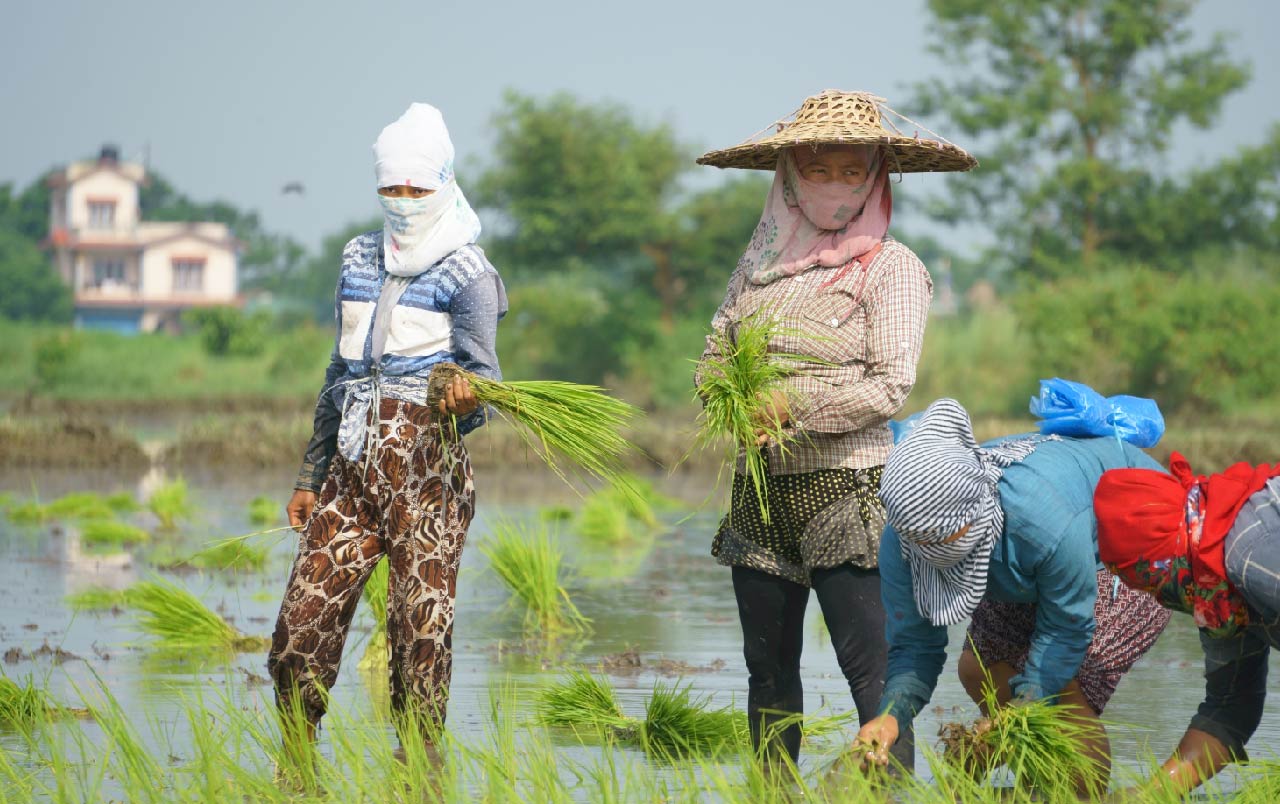Ms. Priyanthi Fernando, former Executive Director of the Centre for Poverty Analysis (CEPA) – Sri Lanka offers opening remarks…
Like in many South Asian countries, Sri Lankan and Nepali farmers faced difficulties due to the COVID-19 pandemic and the associated lockdown measures. One farmer told us in an interview: “We did not have access to sufficient inputs [fertiliser and agrochemicals] on time. We did not have money to purchase at high prices. Collectors did not come to buy our harvest. We could not sell our harvest at a fair price, and the wastage was very high”. His case exemplifies the distress that farmers in both countries endured.
In response to the food system challenges resulting from the pandemic shock, the Institute of Policy Studies of Sri Lanka (IPS) and the South Asia Watch on Trade, Economics and Environment (SAWTEE) undertook a joint study, funded by Southern Voice. The aim is to:
- understand ways to strengthen agri-food markets and value chains and related social protection mechanisms;
- and to build more sustainable, resilient and inclusive food systems in Sri Lanka and Nepal.
COVID-19 Impact on Food Systems
Governments of both countries took several initiatives to help food producers, distributors and consumers during the lockdown. The results were mixed. Agriculture sector operations were spared from lockdown restrictions to prevent the sector from coming to a halt. But the exemption enforcement at the ground level was weak in Nepal. One reason was the lack of coordination among authorities. In addition, there was a disruption of supply chains, for example, through a shortage of agriculture inputs, such as seed, fertiliser and agrochemicals and high input prices. During the initial lockdown weeks, this affected the food systems in both countries.
Food supply was adequate in local markets throughout the pandemic. Yet, some measures adopted to contain it, such as restrictions in transport and storage facilities’ operations, and the closure of major wholesale and retail markets, became a challenge. They caused disruptions in the food supply chains and raised food security concerns. It highlighted the vulnerability of food systems in both countries.
Governments stepped in by purchasing harvest from farmers. However, the most vulnerable farmers, including women, did not benefit. They were least likely to obtain loans from the formal sector due to lack of collaterals and credit defaults. The governments offered maximum retail prices for certain food commodities, focusing on easing the inflationary pressure on consumers. Still, high food prices have consistently forced families to adopt various coping strategies to meet their food needs. Examples are: cutting down on consumption of non-food items, limiting food consumption, borrowing from the informal markets and increasing dependence on friends and relatives. The elderly and vulnerable received cash or food assistance to tide them over the crisis. This effort, while welcome, was poorly targeted. It excluded many vulnerable people. It was due to the lack of reliable information required to administer the assistance scheme in both countries.
Besides the turmoil it created, COVID-19 revealed a high vulnerability of food systems to pandemic shocks. Pandemics are fast becoming a chronic source of distress. Hence, the challenge is to survive the ongoing crisis and strengthen the food system in a sustainable manner.
Possible policy responses
The complexity of the unfolding crisis demands well-thought-out policy responses based on robust evidence. Even if the COVID-19 pandemic begins to reverse, governments should not take a break and pass it off as a temporary shock. Based on our findings, we suggest the following interventions to help ensure resilient rice and vegetable value chains in Sri Lanka and Nepal:
In the short run, the governments need to ensure a smooth supply of inputs, such as seeds, fertiliser and chemicals. They should take measures to improve access to agricultural financing that contributes to developing a resilient value chain. Also, it would be advisable to establish efficient decentralised public and private procurement and distribution systems. They should have buffer stocks and work with e-commerce. That would guarantee timely and cost-effective delivery and distribution of food to areas with food-deficit that are remote and rural. The demand-side should strengthen the food-related social security programmes. It needs to focus on both the humanitarian side – to maintain food security and nutrition – and the economic part.
In the medium to long run, both governments need to address several structural issues in the food system as a whole. Both should ensure proper agri-extension services. Also, information dissemination with digital technology, such as mobile applications and short-messaging services, is pivotal to reach the beneficiaries. Simultaneously, the relevant authorities should continuously monitor food systems. It would ensure national food availability and household access to food. They should include inland food production, imports, domestic and world market prices, input availability, transportation and logistics systems. Moreover, it is essential to address food processing and value addition issues, such as uncertainties of policy and access to finance, knowledge, and entrepreneurs’ technology. Developing farm-market linkages would improve quality, safety and traceability mechanisms along the entire value chains.
Finally, governments should sufficiently utilise the lessons from the COVID-19 pandemic to create and implement relevant sectoral policies. They should address other frequent challenges confronting the food system, such as climate change, foodflation and global trade restrictions. It would make the food system resilient to a range of different shocks.


